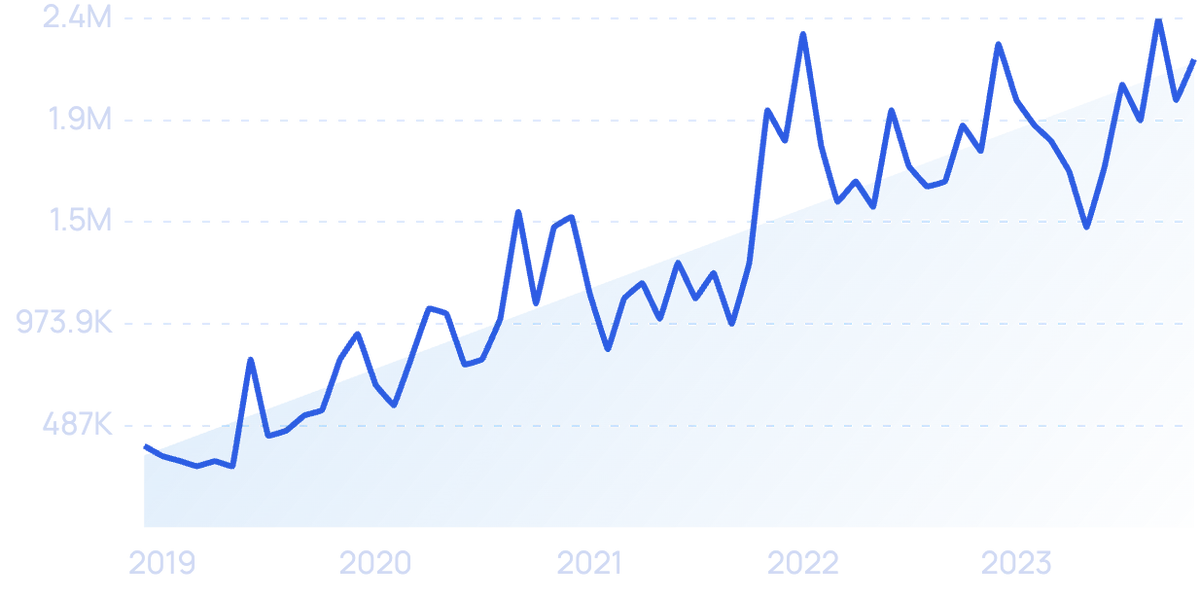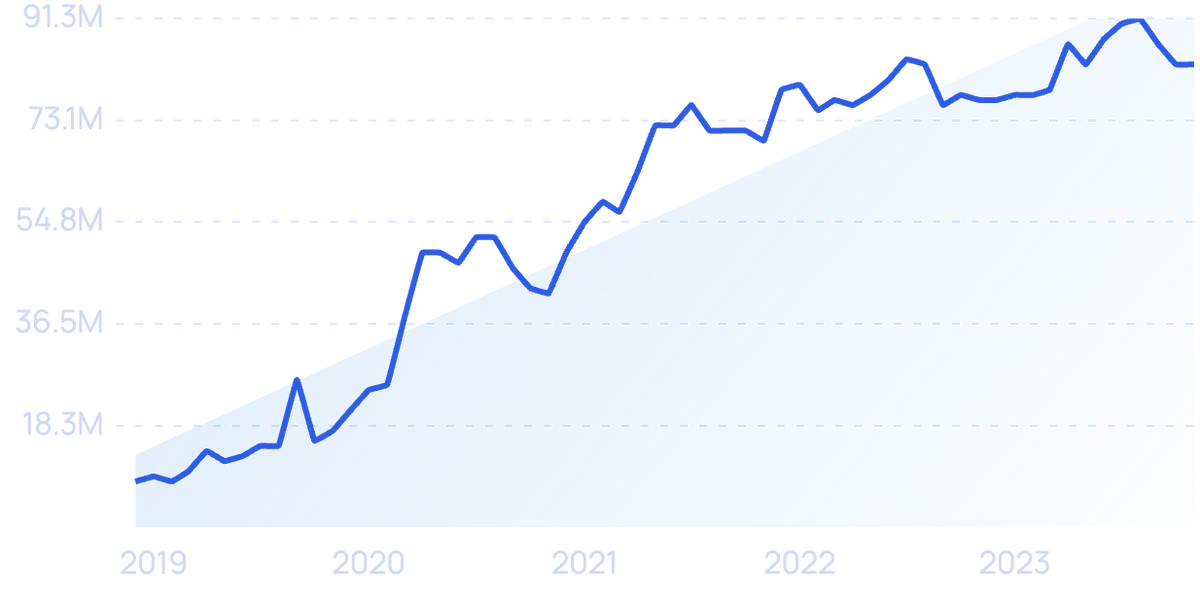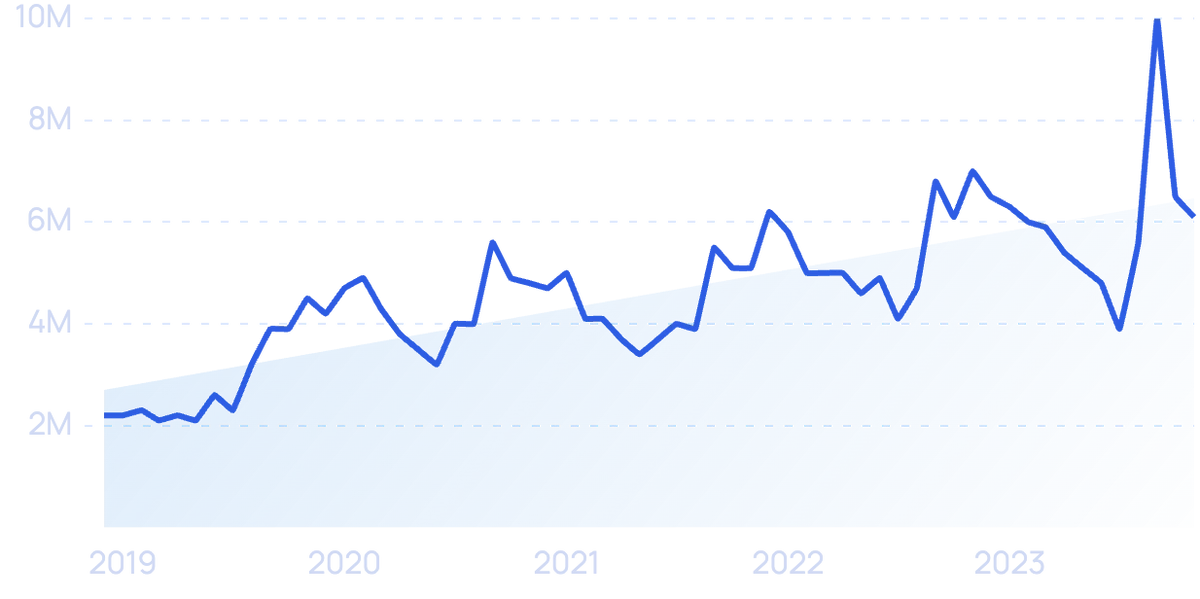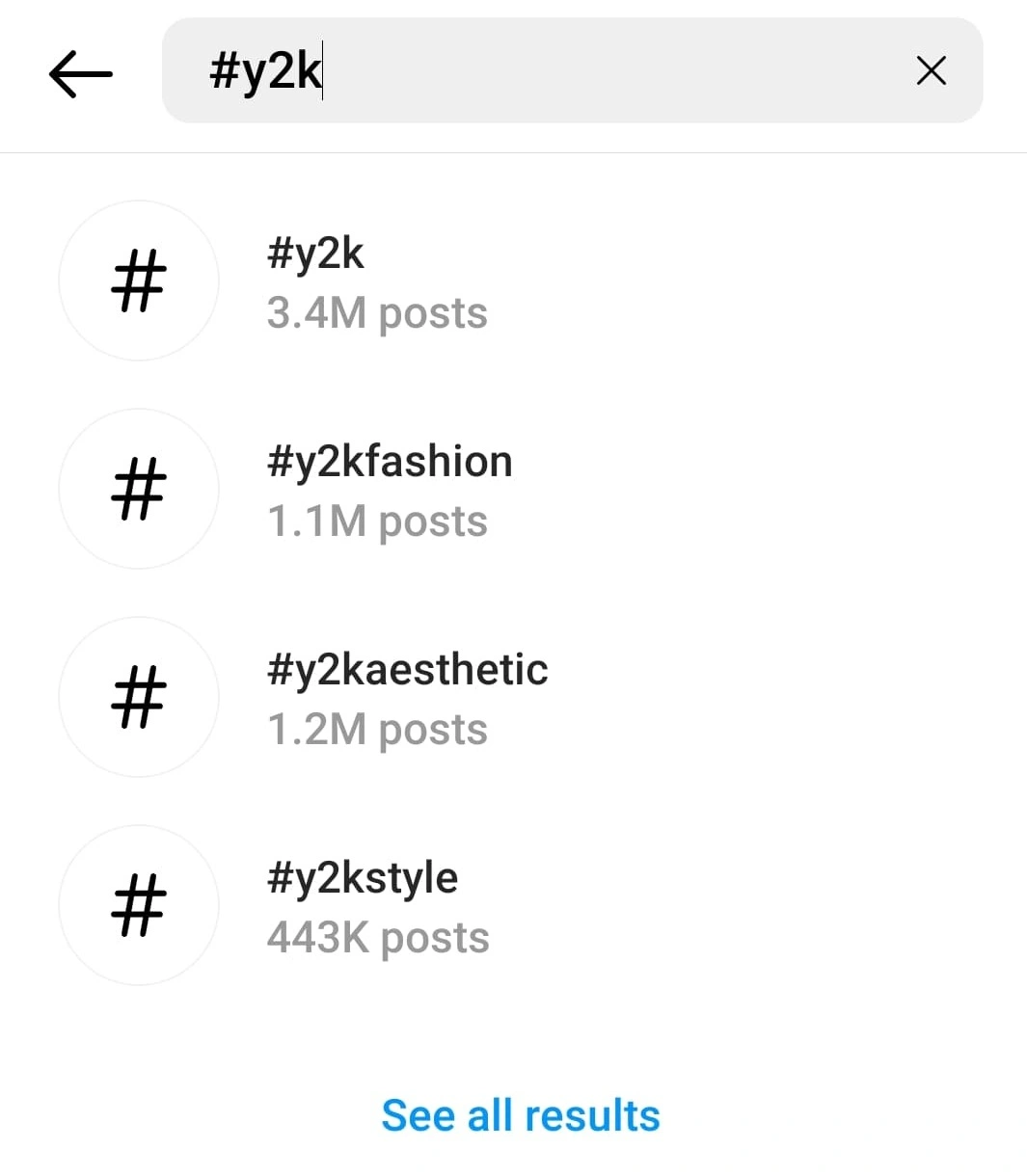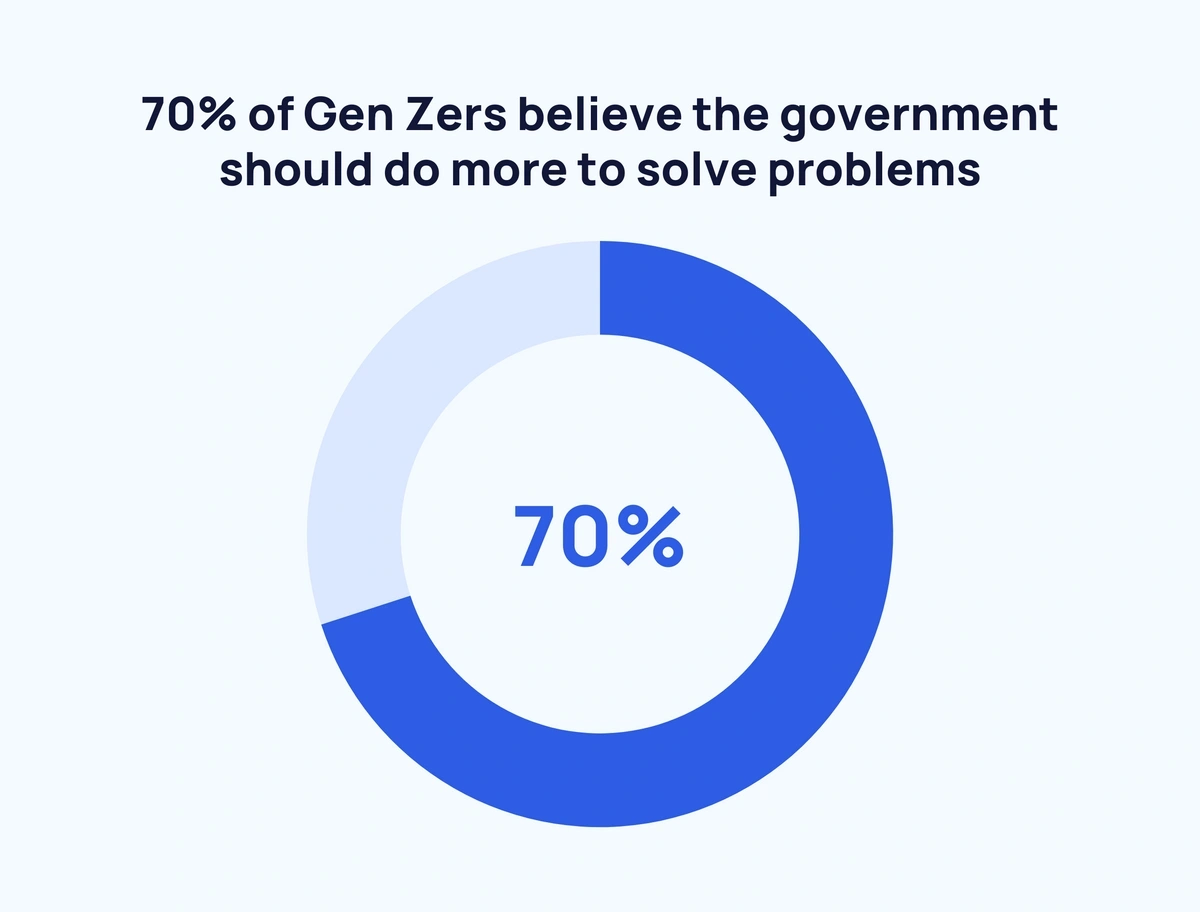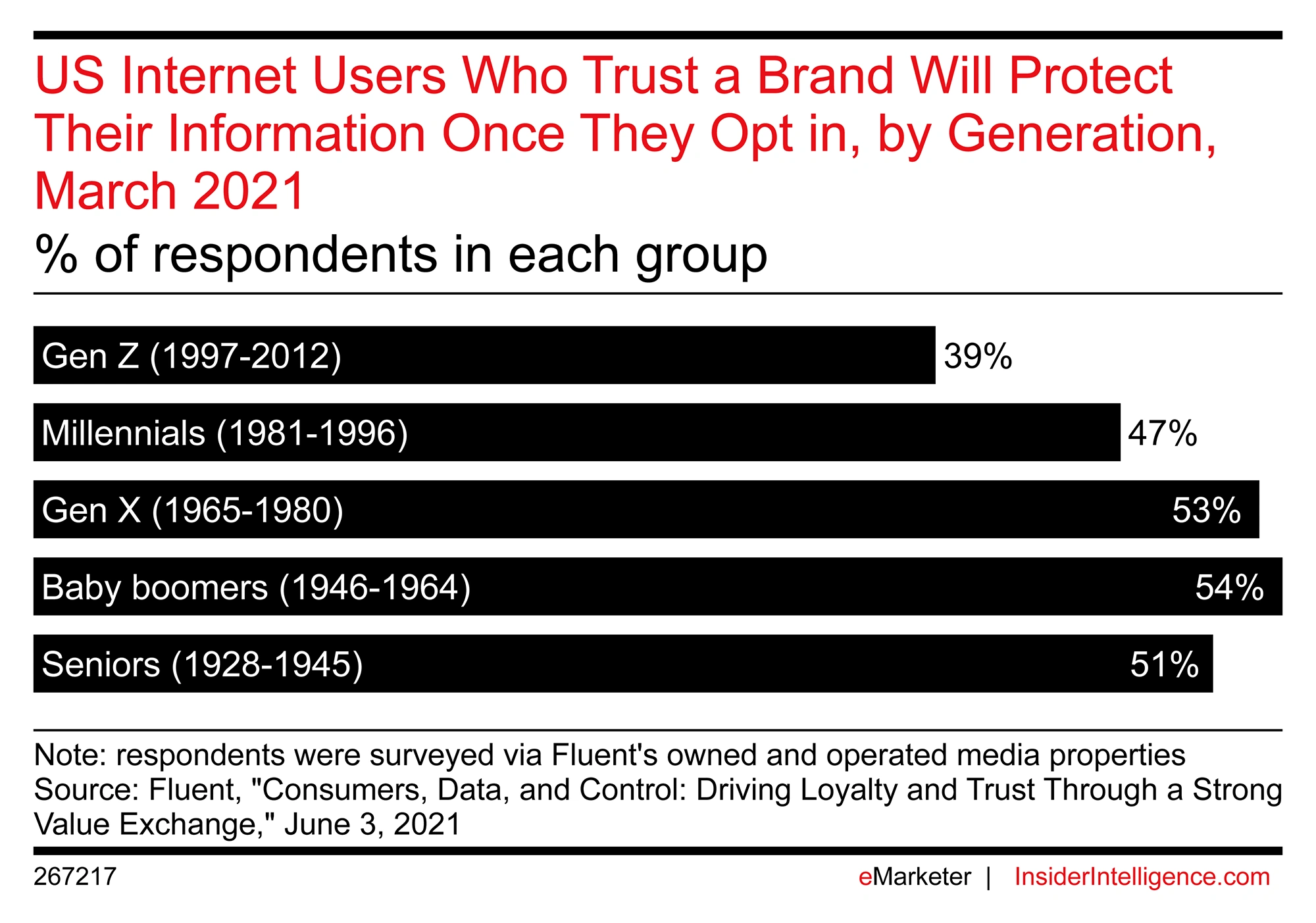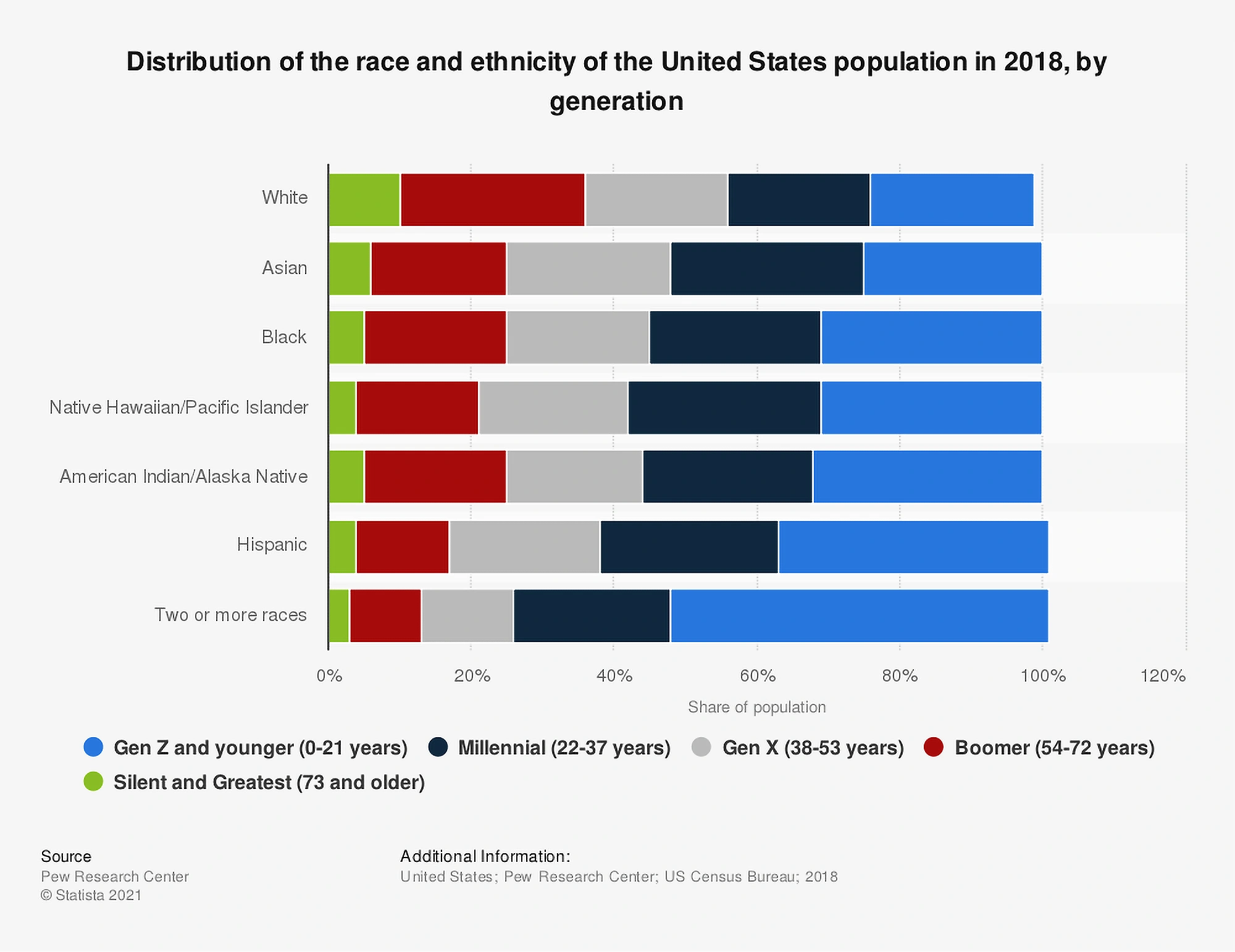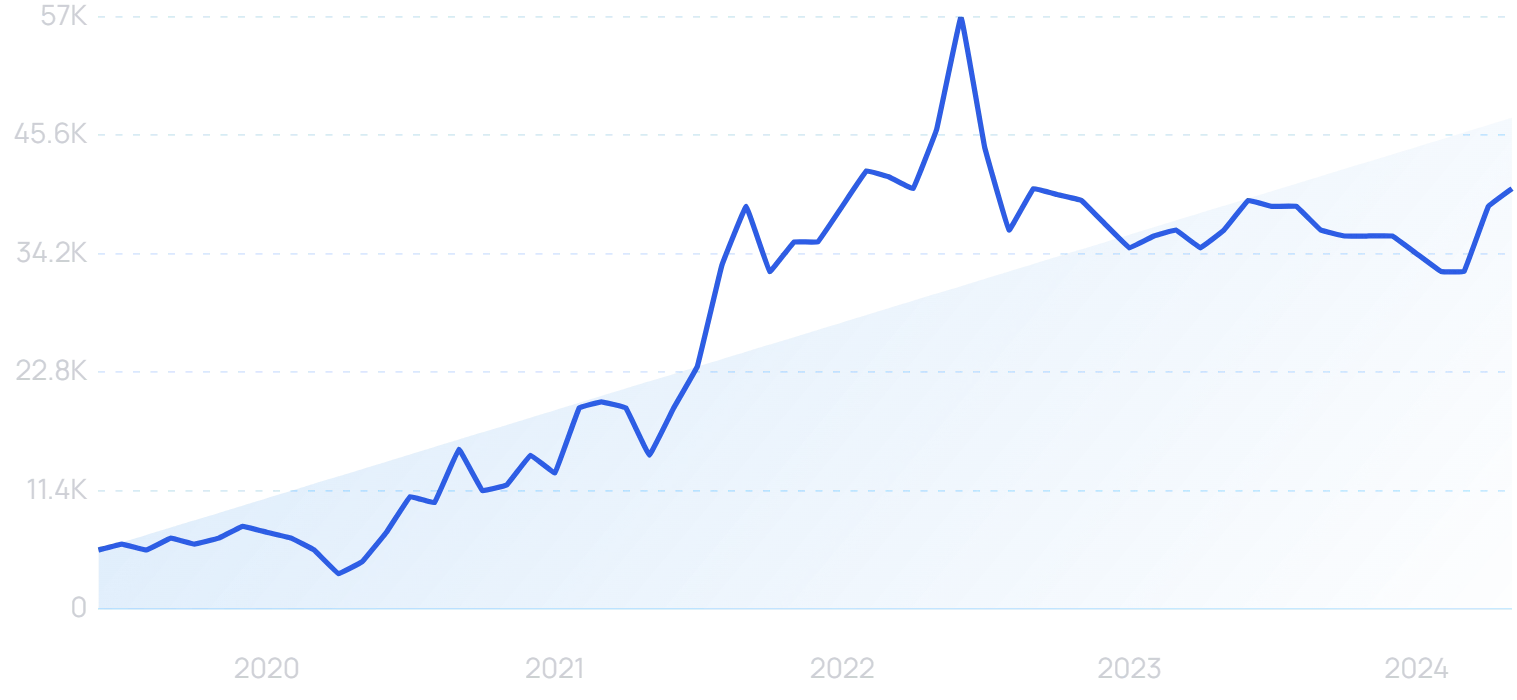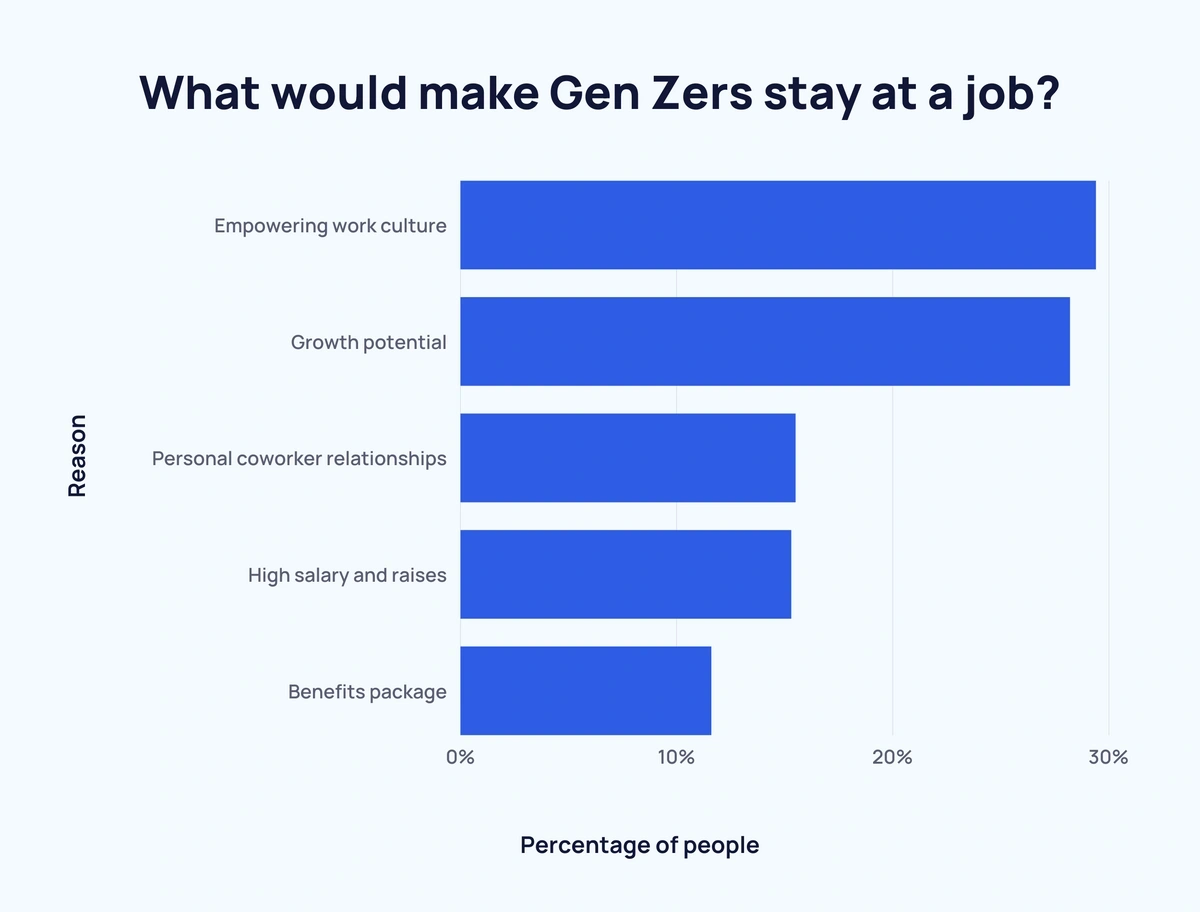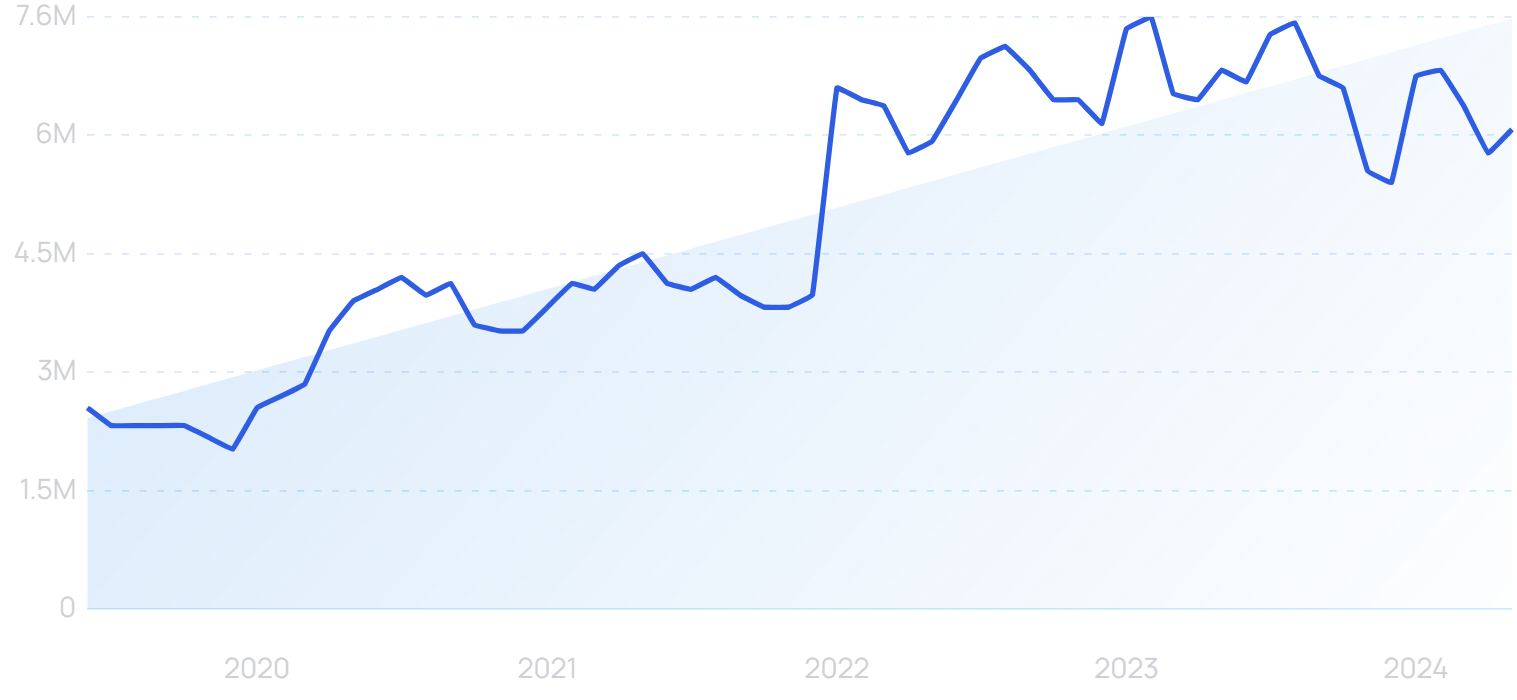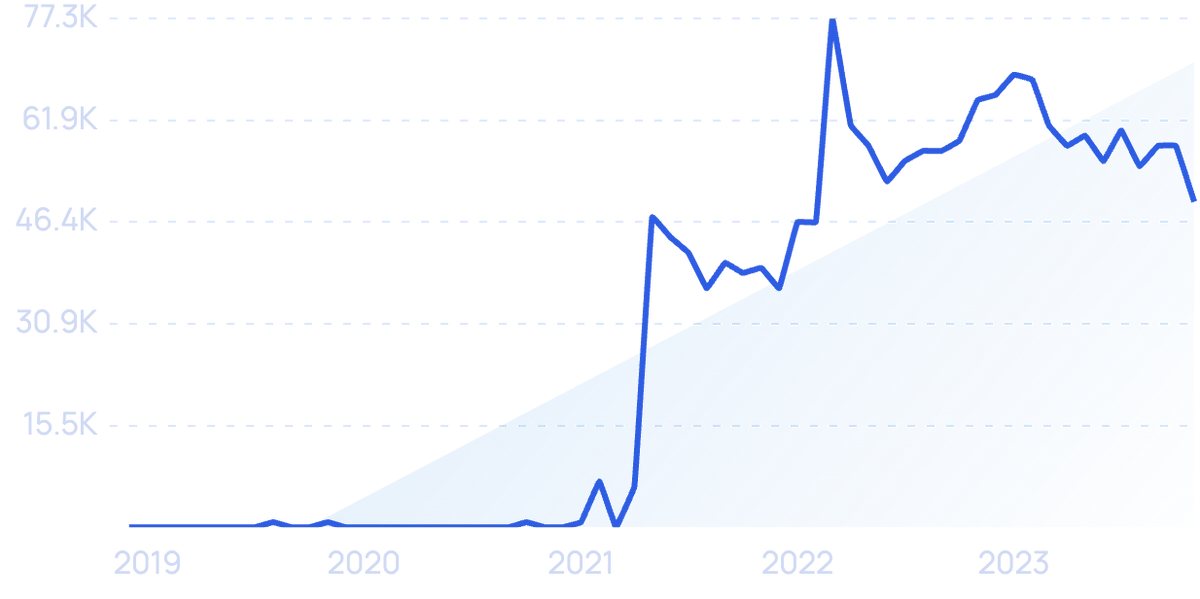
7 Top Gen Z Trends for 2025
You may also like:
Gen Z is the largest generation in American history, currently making up 27% of the population in the US.
Being born between the years of 1997 and 2012, individuals in Gen Z are now between 13 and 28 years old. Many are now entering the full-time workforce and increasing their purchasing power.
How is this generation impacting the world? Here are seven Gen Z trends to watch in 2025 and beyond.
1. Driven by digital
Gen Z are “digital natives” in the truest sense of the term.
The stats prove this.
More than 95% of Gen Zers own a smartphone, 83% own a laptop, and 78% own an internet-connected gaming console.
The “Xbox Game Pass” offers users a Netflix-like experience for video gaming and its popularity is soaring (475% in 5 years).
In fact, they’ve been exposed to tech from a young age, especially when compared to previous generations.
Older Millennials got their first cell phone at an average age of 20. Younger Millennials started at 16. Gen Zers had their own phones by the time they were 12.
Trends show that this generation is becoming more and more centered on tech.
One survey found that more than half of Gen Zers feel more insecure without their smartphone versus without their wallet.
Social media is a huge trend for this generation.
Instagram, Snapchat, and TikTok are, by far, the most frequently used platforms.
One-quarter of Gen Zers spend five hours or more per day on TikTok.
TikTok continues to soar in popularity among members of Generation Z (911% in 5 years).
However, as the members of Gen Z get older, experts predict Facebook may surge to be one of the top three social platforms.
It’s not just social media that has their attention.
Most Gen Zers also use their smartphones for video streaming, music, and podcasts.
The US Media Consumption Report from 2021 showed that 60% of Gen Zers stream music daily and 37% listen to podcasts weekly.
The average Gen Z individual spends 3.4 hours per day streaming videos.
Searches for “YouTube TV” have remained on a fairly steady increase over the past 5 years (177%).
It also reported that 44% of Gen Zers stream more than 3 hours of Netflix per day.
Only 20% of Gen Zers don’t have their own Netflix subscription.
Additionally, Gen Zers account for approximately 22% of Netflix's website traffic, based on Semrush data. That equals roughly 61.5 million unique visitors each month.
Want to Spy on Your Competition?
Explore competitors’ website traffic stats, discover growth points, and expand your market share.
2. Nostalgic for the 2000s
Gen Zers have started bringing back trends from the early 2000s.
Marketing experts see this as a mix of old and new: Gen Z wants old products with a new focus on sustainability and social awareness.
Three “y2k” inspired hashtags have more than 3 million posts on Instagram.
Y2K is a popular trend on Instagram.
Gen Zers are especially nostalgic for fashion from the 2000s.
Low-rise jeans are also making a huge comeback courtesy of Gen Zers.
Pop culture and fashion from the 2000s are coming back, courtesy of Gen Z. Searches for “y2k fashion” are up more than 2000% since 2019.
Depop, a fashion resale app, is incredibly popular among Gen Zers - 90% of its users are younger than 26. “Vintage” items from the 2000s are exploding on the app.
Depop saw a surge in the months following the pandemic and searches for the platform have remained high.
Gen Zers are taking their tech products back in time, too.
The “flip phone” hashtag has over 600 million views on TikTok.
CASETiFY released iPhone cases that look like Blackberries, flip phones, and the original iPod.
Some are even ditching AirPods for wired headphones.
3. Distrust of government and other organizations
A Pew Research report showed that 7 in 10 Gen Zers believe the government should do more to solve problems.
A recent study said 66% of Gen Zers disagree that the government has done its best to protect the country.
The same study reported that nearly 60% of this generation agreed that it’d be difficult to trust the government post-pandemic.
One research paper suggests this distrust could continue well into the future.
The Political Scar of Epidemics, published in mid-2020, suggested that individuals who experience an epidemic when they are between the ages of 18 and 25 are likely to have negative attitudes toward the government and elections for a long time after the epidemic is over.
This means individuals in the older segment of Gen Z are less likely to trust elections, less likely to have confidence in the government, and less likely to approve of political leaders.
This trend notably had a large impact on the 2024 election.
In 2020, Millennials and Gen Zers made up 37% of the voting-eligible population. In 2024, that number jumped to 44% with all the growth coming from members of Gen Z.
The distrust of Gen Zers goes beyond politics.
They are unlikely to trust brands, too. Only 39% of Gen Z internet users trust a brand to keep their data safe.
Consumers in Gen Z trust brands with their data much less than any other generation.
A Deloitte survey found that 24% of Gen Zers don’t trust business leaders, 30% don’t trust traditional media, and 49% don’t trust religious leaders.
This trend may continue as Gen Zers grow into adults, but some experts suggest distrust is just part of being a teenager.
Peter Adams, who leads an organization teaching kids about media literacy, recently said, “Trust in institutions is down across the board, but teens experience even more cynicism about institutions just as a function of their time of life.”
4. Embracing diversity and social justice
Gen Z is the most ethnically diverse generation ever.
In the United States, nearly 40% of the Hispanic population belongs to Gen Z.
The Pew Research Center reports that 48% of Gen Zers are from racial or ethnic minorities.
This trend is amplified in certain locations.
For example, in the West, non-Hispanic whites make up only 40% of the Gen Z population. In the South, that number jumps to 46%.
Research shows that this generation is not only ethnically diverse, but they believe in the benefit of increasing diversity in society as a whole.
One report showed that 62% of Gen Zers believe that increasing diversity is good for society.
Members of Gen Z have also emphasized inclusion and social justice in recent years.
In one survey, Gen Z Republicans were much more likely than other Republicans to say that Blacks aren’t treated as fairly as whites in America today.
A poll run by Yubo, a social networking app, reported that 88% of Gen Zers feel that Blacks don’t receive equal treatment.
The Yubo poll also showed that 4 in 5 Gen Zers support the Black Lives Matter movement.
5. Emerging buying power
Gen Z's global purchasing power is more than $400B.
A few key financial trends have emerged in this generation.
Buy now, pay later (BNPL) services are wildly popular with Gen Z.
Build a winning strategy
Get a complete view of your competitors to anticipate trends and lead your market
Predictions state that more than 44% of Gen Z digital buyers (over the age of 14) used a BNPL service at least once.
Buy Now, Pay Later (BNPL) platforms are becoming more mainstream, especially among Gen Zers. Search volume is up considerably 6x in 5 years.
Individuals in Gen Z report that talking to family and friends is the most common way they find out about new brands, companies, and products. However, YouTube ads are a close second.
The trend of shopping entirely online is not as popular with Gen Zers as it is with their older counterparts, the Millennials. Gen Zers are much more likely to shop in stores.
Gen Zers differ from other generations because they want to stand out, not fit in. Brands are an afterthought for this generation.
Individuals in Gen Z are also looking for retailers that value inclusion as much as they do.
In a survey from McKinsey, 48% of Gen Zers say they value brands that don’t classify their products as male or female.
6. Influencing the workplace
The oldest members of Gen Z are just now entering the full-time workforce for the first time.
But by 2025, members of Gen Z will make up 27% of the global workforce.
Right now, they’re starting to lead the charge for several big changes.
The first is work-life balance.
Research shows that nearly 40% of Gen Zers put a large emphasis on work-life balance when choosing where to work.
Gen Zers are also likely to focus on empowering work culture and potential for growth within the company.
Work culture and growth potential are the top two reasons Gen Z employees will stay with a company, according to Finances Online.
Gen Z is also demanding more workplace benefits. They want flexible hours, fully covered health insurance, free meals, and sizeable salary increases - just to name a few.
They want their employer to encourage a healthy lifestyle. Gym memberships, flexible spending accounts related to healthy activities, and sabbaticals are all trending as benefits now.
Employee wellbeing has become a topic of focus in many organizations. Search volume is up nearly 317% over 5 years.
Generation Z is one subset of employees that does not put a large emphasis on working remotely.
In one survey, 48% of respondents said they’d prefer a hybrid work environment. Only 30% wanted to work fully remotely.
Searches for “hybrid work” surged in the latter half of 2020 and is up 342% over 5 years.
In one survey, nearly half of Gen Zers said they’d like to own their own business.
Lending Tree reports that 46% of Gen Zers over the age of 18 have a side hustle.
Nearly one-quarter of these individuals would not be able to pay their bills if they didn’t have that side hustle.
A few of the most popular spots in the gig economy for Gen Z workers are selling custom clothing, selling artistic goods on Etsy, and freelancing on Fiverr.
"Fiverr" searches have grown by 138% in 5 years. The site is a hit with Gen Zers who are hoping to earn income in the gig economy.
7. Rising mental health concerns
A survey from Deloitte found around half of Gen Zers feel stressed or anxious most or all of the time.
Reports from McKinsey say Gen Zers have the least positive outlook on life, and individuals in this generation are two to three times more likely than other generations to have thought about or attempted suicide in the past year.
The cause of these mental health concerns varies.
One potential reason is the generation’s excessive use of technology - a condition that some mental health experts have termed “iDisorder”.
Social media, in particular, has been connected to worsening mental health among young people.
The “digital wellbeing” of Gen Zers is a cause for concern. Search volume for this term has risen 6,300% over the last 5 years.
A survey conducted by the American Psychological Association, reported that adults in Generation Z were “the most likely generation to say that their mental health has worsened compared with before the pandemic”.
Gen Z adults were also much more likely to report feeling isolated and not getting adequate emotional support.
In recent years, up to 75% of Gen Zers have reported being stressed out by the threat of gun violence and mass shootings.
Even with these unfortunate statistics, members of Generation Z seem to be more open to getting help and discussing mental health troubles.
Compared to other generations, they are more likely to receive treatment from a mental health professional.
In some ways, the stigma associated with mental health issues has also diminished in the last few years.
Various celebrities, many of them Gen Zers or Millennials, have talked publicly about their own mental health struggles.
In an effort to boost their mental health, self-care and holistic health have become popular among Gen Zers. They’re making healthier food choices, using more skin products, and abstaining from alcohol more often.
Conclusion
Generation Z is unlike any generation that’s come before them. They’re connected, they’re diverse, and they’re ready to make their opinions known.
But, with so many Gen Zers being under 18 years old, the future of this generation may change drastically in the coming years.
With their ever-increasing purchasing power and propensity to impact social issues, Generation Z is one we’ll all want to watch closely.
Stop Guessing, Start Growing 🚀
Use real-time topic data to create content that resonates and brings results.
Exploding Topics is owned by Semrush. Our mission is to provide accurate data and expert insights on emerging trends. Unless otherwise noted, this page’s content was written by either an employee or a paid contractor of Semrush Inc.
Share
Newsletter Signup
By clicking “Subscribe” you agree to Semrush Privacy Policy and consent to Semrush using your contact data for newsletter purposes
Written By


Josh is the Co-Founder and CTO of Exploding Topics. Josh has led Exploding Topics product development from the first line of co... Read more

